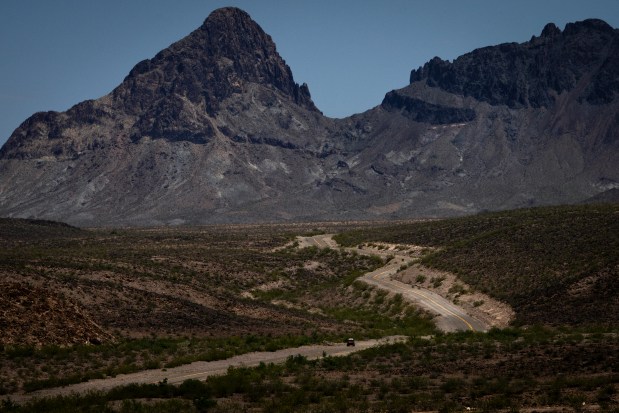For the first time polluters could be forced to clean up sites contaminated with a pair of forever chemicals that build up in human blood, cause cancer and other diseases and take years to leave the body.
The new policy from President Joe Biden’s administration is the latest attempt to prevent the further spread of perfluorooctane sulfonic acid (PFOS), used for decades by 3M to make firefighting foam and Scotchgard stain repellent, and perfluorooctanoic acid (PFOA), sold to DuPont by 3M to manufacture Teflon coatings for cookware, clothing and wiring.
Declaring the chemicals hazardous substances under the federal Superfund law gives the U.S. Environmental Protection Agency broad powers to require companies responsible for fouling the environment to pick up the tab for investigating and cleaning up PFOA and PFOS pollution.
Though the toxic compounds are no longer made in the United States, they are called forever chemicals because they don’t break down. Both have been found in the drinking water of 200 million Americans, including at least 2 million in Illinois.
“President Biden understands the threat that forever chemicals pose to the health of families across the country,” EPA Administrator Michael Regan said Friday in a statement. “Designating these chemicals under our Superfund authority will allow EPA to address more contaminated sites, take earlier action and expedite cleanups.”
The new regulations are part of the administration’s broader campaign to address the widespread threats to people and wildlife. Last week the EPA adopted the first nationwide limits on PFOA, PFOS and four other forever chemicals in drinking water.
Government action to protect Americans from the chemicals has been slow-coming. For decades manufacturers kept secret what they knew about the dangers of PFOA and PFOS, which are among thousands of compounds known as per- and polyfluoroalkyl substances or PFAS. Then multiple presidential administrations failed to regulate forever chemicals or limit their spread.
PFAS end up in lakes, rivers and wells after flushing through sewage treatment plants and spreading from factory smokestacks. They also leach out products resistant to water, grease, heat and stains. Examples include carpets, clothing, cookware, cosmetics, dental floss, fast-food wrappers, food packaging, microwave popcorn bags, paper plates, pizza boxes, rain jackets and ski wax.
“It’s long past time for the polluters who poisoned all of us to be held responsible,” said Ken Cook, president of the Environmental Working Group, a nonprofit group that has studied PFAS and advocated for federal action since the early 2000s.
“This comes too late for all the people who were poisoned without their knowledge or consent and have paid the price for one of the greatest environmental crimes in history,” said Cook, who called the Biden administration’s Superfund designation “the first step to bring justice to those who have been harmed.”
Including the former Scotchgard and Teflon chemicals in the Superfund law is “great news for the many communities grappling with PFAS contamination, many of which are also low income and communities of color,” said Dr. Tracey Woodruff, director at the Program on Reproductive Health & the Environment at the University of California at San Francisco.
Industry lobbyists contend the policy change could bog down cleanups. Many fear the prospect of multi-billion dollar cleanups dictated by the federal government.
Invoking the Superfund law “appears to prioritize creating new opportunities for litigation,” Chuck Chaitovitz, vice president of environmental affairs and sustainability at the U.S. Chamber of Commerce, said in a statement. “Local governments, landowners, and businesses will now likely have to devote resources that could have been used to improve our environment to fighting frivolous litigation.”
“EPA already has sufficient enforcement tools at its disposal to address PFOA and PFOS without the designation (of) them as hazardous substances,” Stephen Risotto, senior director at the American Chemistry Council, said in comments filed after the EPA introduced a draft of the regulations last year.
Some industries are lobbying Congress for exemptions, arguing PFAS manufacturers should be solely responsible for cleanups.
Sewage treatment operators are particularly concerned. Many offer sludge to farmers as free fertilizer, a practice encouraged by the EPA, but during the past decade studies by academic researchers and state regulators have found human and industrial waste is contaminated with PFAS.
“The reality of this final rule means that utilities will face increased operational costs and uncertainties, and most worrisome, will be the target of endless litigation from the manufacturers of PFAS,” a coalition of drinking water and wastewater industry trade groups said in a statement.
EPA officials are considering regulations that would limit forever chemicals in sewage sludge, perhaps by requiring industries to remove the chemicals before discharging waste into municipal sewers. The use of fertilizer on farmland already is exempt from the Superfund law.
Minnesota-based 3M agreed last year to pay at least $10.3 billion to settle thousands of claims accusing the company of contaminating public water systems with its forever chemicals. DuPont and two other companies reached a $1.19 billion settlement in the same cases, filed by cities and water systems across the nation.
DuPont and 3M earlier paid nearly $2 billion combined to settle other PFAS-related lawsuits without accepting responsibility for contaminated drinking water or diseases suffered by people exposed to the chemicals.
The companies have long maintained forever chemicals are not harmful at levels typically found in people. But top 3M executives knew as early as the 1950s about the harmful effects of PFAS, according to documents obtained in series of lawsuits filed since the late 1990s. The company didn’t begin telling the EPA what it knew about PFOA and PFOS until 1998 — more than two decades after Congress approved the nation’s first chemical safety law.
3M has said it will stop making PFAS next year.



